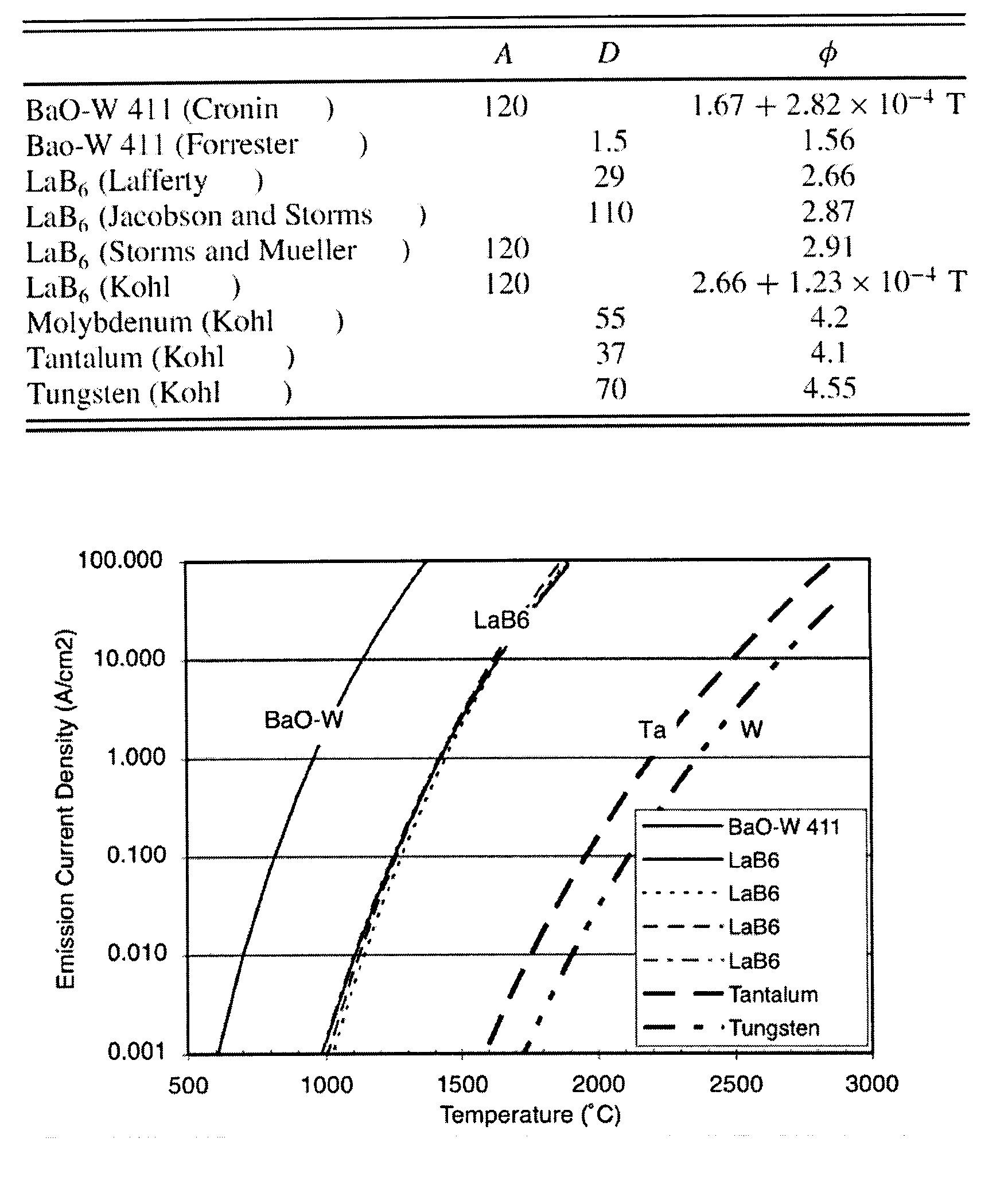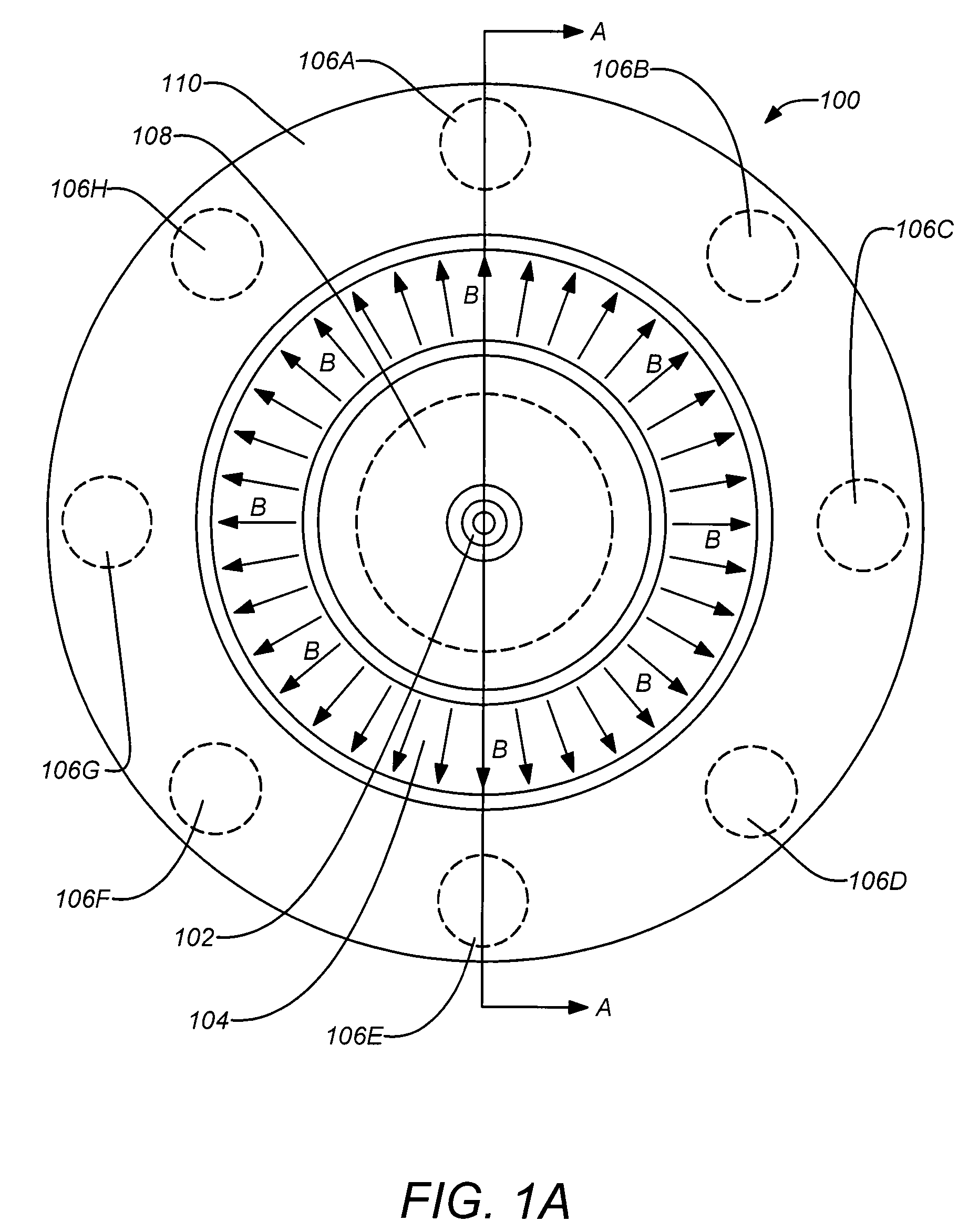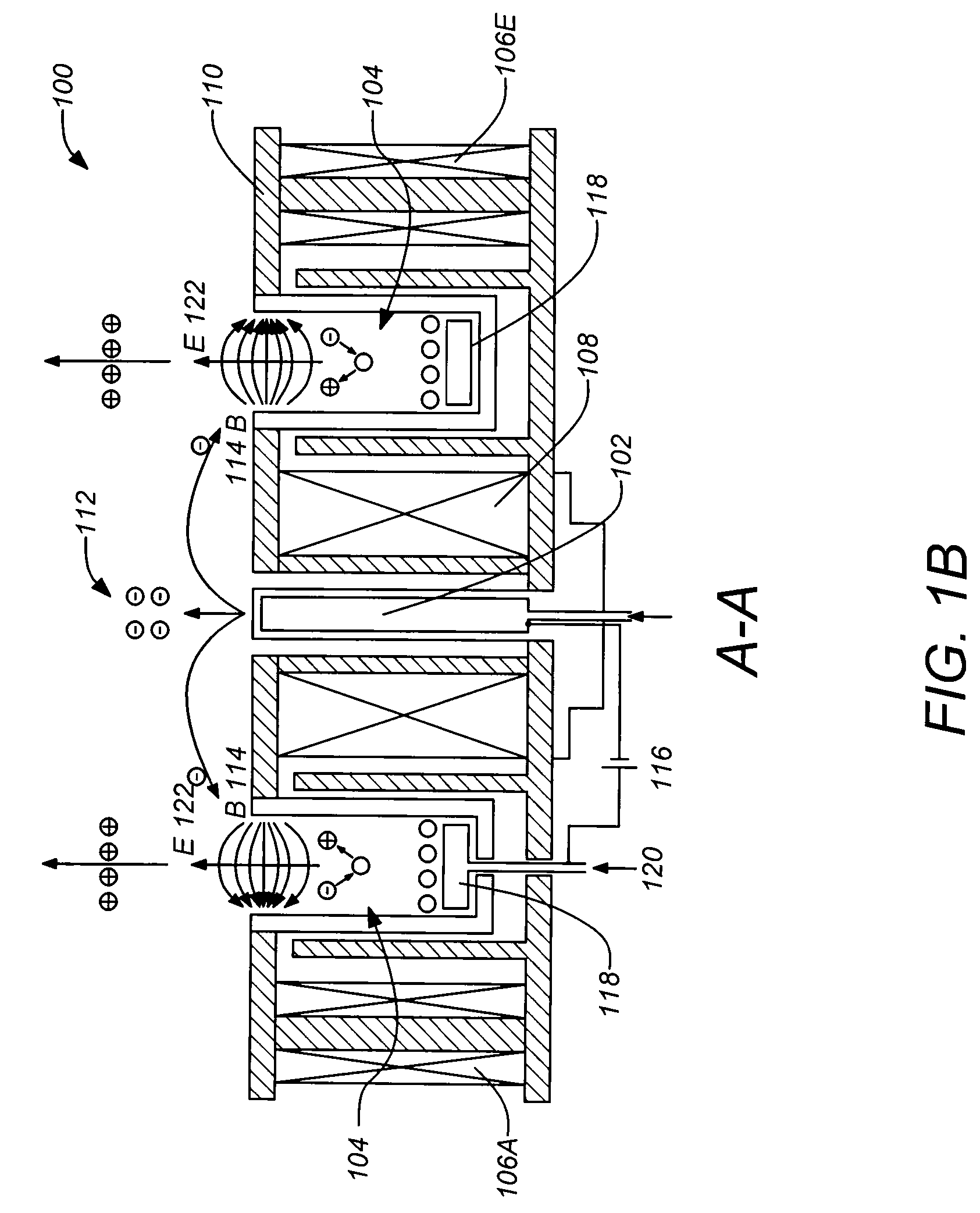Compact high current rare-earth emitter hollow cathode for hall effect thrusters
a rare earth emitter and hall effect technology, applied in the direction of discharge tube main electrodes, cosmonautic vehicles, machines/engines, etc., can solve the problems of reducing the work function of the surface, and reducing the work function of the thruster, so as to achieve high aspect ratio geometry, enhance throughput, and efficient central cathode
- Summary
- Abstract
- Description
- Claims
- Application Information
AI Technical Summary
Benefits of technology
Problems solved by technology
Method used
Image
Examples
Embodiment Construction
[0038]1. Overview
[0039]As previously mentioned, embodiments of the invention are directed to central cathode electron emitters for Hall effect thrusters. The novel cathode electron emitters employ an insert comprising a rare-earth element to obtain longer life and resistance to poisoning. The cathode employs an end opening having an area at least as large as the internal cross sectional area of the rare earth insert to enhance throughput from the cathode end. In addition, the cathode employs a high aspect ratio geometry based on the cathode length to width which mitigates heat transfer from the end. The compact design for the cathode emitter has the capability of high emission current, e.g., 10 to 60 A.
[0040]Although lanthanum hexaboride (LaB6) is the most common rare earth emitter material and has been used for nearly forty years, embodiments of the invention employ a novel design capable of surviving spacecraft launch vibrations and resolves significant heater and material compati...
PUM
 Login to View More
Login to View More Abstract
Description
Claims
Application Information
 Login to View More
Login to View More - R&D
- Intellectual Property
- Life Sciences
- Materials
- Tech Scout
- Unparalleled Data Quality
- Higher Quality Content
- 60% Fewer Hallucinations
Browse by: Latest US Patents, China's latest patents, Technical Efficacy Thesaurus, Application Domain, Technology Topic, Popular Technical Reports.
© 2025 PatSnap. All rights reserved.Legal|Privacy policy|Modern Slavery Act Transparency Statement|Sitemap|About US| Contact US: help@patsnap.com



